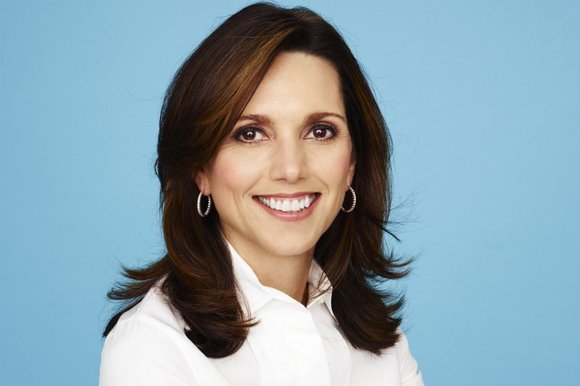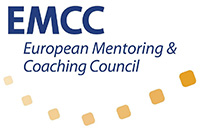Meeting? Take a walk in the park
More companies are introducing fitness programmes for their staff. Now only the profits are getting fatter
By Hannah Prevett

Beth Comstock: GE spends $50m a year to keep staff healthy
We’ve heard about walking the talk, now we have “walk-and-talks” — the art of conducting business meetings on the move.
When Nilofer Merchant, the Silicon Valley strategist and author, requested a coffee meeting with the venture capitalist Heidi Roizen and was told that Roizen “didn’t do” coffee, she jumped at the chance to accompany her for a dog walk instead.
In fact, she liked the idea so much that she introduced walk-and-talks into her own schedule. It was a new answer to an old problem, she said. “It struck me that I had managed to do a fitness thing and get a meeting done at the same time.”
Walk-and-talks have become increasingly popular in Silicon Valley as companies focus more on incorporating employee wellbeing into hectic schedules. But the concept is also taking hold beyond California. Companies throughout the world are trying to get their staff fitter.
The renewed focus on staff wellbeing is being driven by the fact that the workforce is unhealthier — and heavier — than ever. “Two-thirds of people in the UK are either overweight or obese,” said Chris Tomkins, head of personal health risk management at Axa PPP Healthcare.
“What organisations in the modern service economy are experiencing is a stealthy reduction in productivity as the cognitive performance and energy of their organisation are being sapped by the accumulation of this risk.”
Some organisations are making changes. Merchant cites examples of American companies that hand out maps of paths that employees can follow if they want to hold walk-and-talks. “I think that’s a great way of signalling as an employer that . . . there are many ways we can create communities or hold interactions. It doesn’t have to be around a coffee table.”
Other organisations have made substantial inroads with wellbeing initiatives that assess and benchmark staff fitness. “It’s about a good behavioural change framework,” said Tomkins. When companies collect data, they will be able to establish what impact the programme has had on employees’ health and weight and also on the company’s productivity and profitability.
One global organisation that has made a firm commitment to improving the health of its workforce is General Electric. It spends $50m a year on its Health Ahead programme, which offers employees and their families benefits such as cheap fitness centres and advice on how to stop smoking.
Collecting data and conducting audits on improvement is a cornerstone of Health Ahead. The most recent statistics show that 70% of all GE employees are now involved with the scheme in some way, and that 200,000 staff have access to free or reduced-cost gyms. Meanwhile, every single GE site throughout the world is now smoke-free.
By the end of last year, 400 of GE’s largest sites were Health Ahead certified — meaning that employees are engaging with the programme, said Beth Comstock, the company’s chief marketing officer. “We have a scorecard process that is about making sure our employees are taking advantage of opportunities from free fitness programmes on campus to subsidised healthy food and fitness challenges that pitch one business unit against another.”
Anecdotal evidence seems to support GE’s statistics about the effectiveness of the programme. “We’ve had many people who’ve lost significant amounts of weight, and there is an internal network around that kind of thing,” said Comstock, pointing to one example of an employee who lost weight and subsequently inspired his colleagues. “He has become an internal guru, if you will, for weight loss. People in the company have sought him out for help and advice.”
One of the most powerful tools for tackling wellbeing and fitness is social networks, said Comstock. And there is a body of academic work to back up her theory: the influence of networks on human behaviour has been explored by academics such as James Fowler at the University of California, San Diego, and Nicholas Christakis, a professor of medicine, sociology and healthcare policy at Harvard and, according to Time magazine, one of the 100 most influential people in the world.
The research by Fowler and Christakis found conclusive evidence that social networks are powerful in shaping the way we think, feel and operate. Even weight is invisibly guided by network effects, said Fowler and Christakis in their book Connected: How Your Friends’ Friends’ Friends Affect Everything You Feel, Think and Do.
Christakis and his colleagues at Harvard have since developed technology that maps networks in organisations to spot the most influential people in teams and departments. Wellbeing programmes can then be implemented with the help of these key individuals, so increasing their chances of success.
Don’t turn into the austerity police
General Electric’s health initiatives have implications throughout the organisation — from the frontline employees all the way up to the higher echelons of management, said Beth Comstock, GE’s chief marketing officer.
“If we are having an executive meeting or a sales meeting, in the name of Health Ahead, we’ll have a fitness instructor do a five-minute exercise break. The food will all be healthy. The desserts will be smaller.”
The idea is not to ban certain foods, she added, but to encourage people to make healthier choices. “You don’t totally forbid things. You don’t say ‘no cupcakes allowed’. But you try to incorporate it into the way you work as a company. You make sure you have good fitness programmes and people do stretch breaks and you try walking to meetings,” she said.
“You don’t try to be the austerity police. You just try to balance it.”
Larry Miller, who runs Activate Networks, the company to which the technology was licensed, said organisations are keen to tackle the impact of rising weight and decreasing wellbeing on employees, but are encountering the same challenges. “The two problems that keep coming up are motivation and sustainability. You can have a great programme around fitness, for example, but how do you get employees to engage? You can’t coerce them. And then, in the long term, how do you keep them involved?”
This is where the social network aspect of wellbeing programmes can help, said Miller. “The beauty of networks is, I think, that we all know intuitively that if we do an activity with our friends, we’re more likely to keep doing it than if we’re doing it on our own.
“If you use networks and identify the people who are connected, and identify influential people and make them champions, you’ll get greater engagement,” he said.
The social aspect of health and wellbeing is something that GE is exploring with an app for Facebook called Healthy Share. “It’s based on the idea that health is better shared with friends,” said Comstock.
“It’s still very experimental, but we’re finding out some interesting things about what people want to share and how they want to motivate each other. Social media seem to be a very good platform to do that,” she added.






